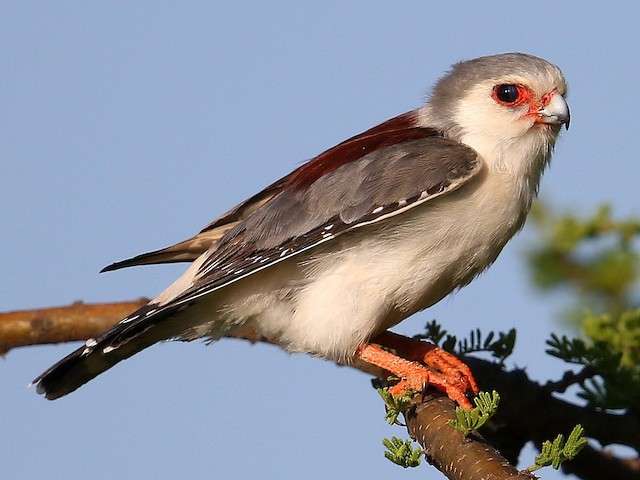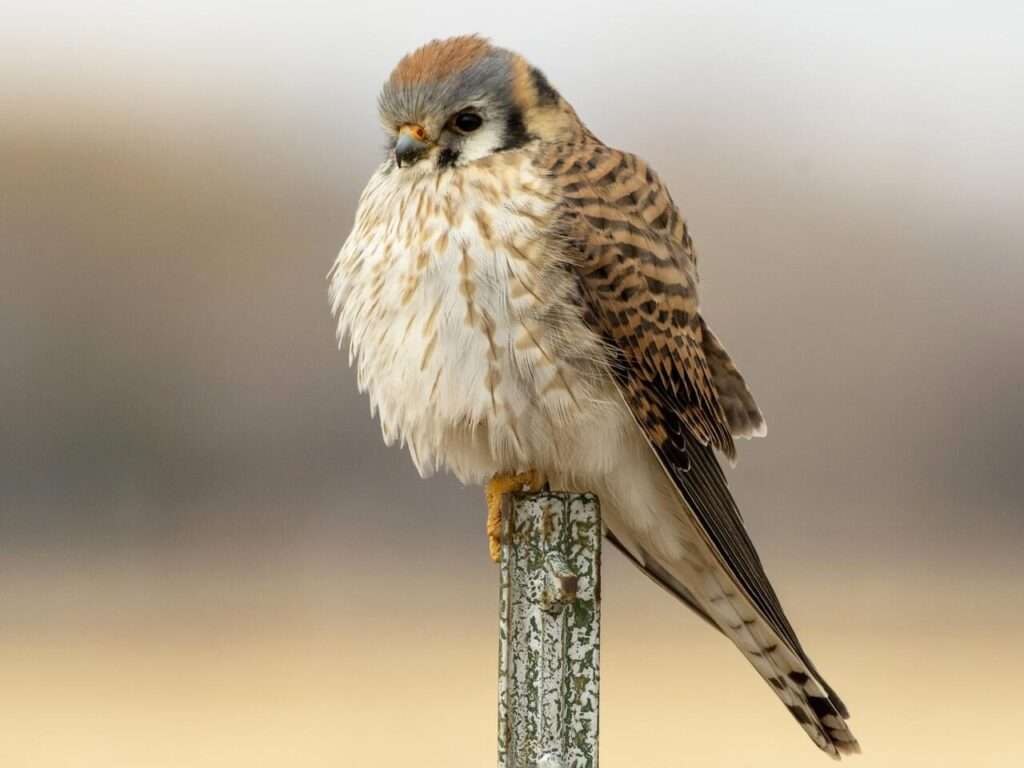
Description
Life span: Up to 30 years
The largest species in the Accipiter genus is the northern goshawk. Males are typically 55 cm tall, weigh between 630 and 1100 grams, and have wingspan measures between 98 and 104 cm. Females typically weigh between 860 and 1360 grams, have a wing span of 105 to 115 cm, and are 61 cm long.
The characteristic white band of hairs around the eye is present in all accipiters, including northern goshawks. The goshawk’s band is thicker and more noticeable in comparison to its relatives of other species. Young goshawks have dazzling yellow eyes, while adults have reddish-brown to crimson eyes. The color of the mature male and female bird ranges from slate blue-gray to black. They typically have darker heads, wings, and backs. The grey banding on their white underparts is faint and horizontal. Their pale grey tails have three or four black stripes on them.

Native Region/Habitat
The mountains and forests of Eurasia and North America are home to northern goshawks. They are found all over North America. They typically don’t show up in the Southeast of the United States.
Both coniferous and deciduous ecosystems can support northern goshawks. They like mature woods with a variety of tall, ancient trees, a light canopy, and tiny open areas for eating during the breeding season. During the chilly winter months, they migrate to warmer areas, usually in lower-elevation areas.
Behavior
Most goshawk populations are stable, and individuals frequently spend their entire lives at the same breeding sites. Only goshawks that breed in North America’s north and northwest are migratory. They spend the winter flying south, then come back to their nesting grounds in the spring.
This species is an adept hunter, taking down birds and other creatures in a variety of woodland settings. By moving rapidly and exploiting obstacles as cover, they frequently ambush their victim. Goshawks frequently forage in nearby environments, like the area separating a meadow and a forest. When hunting, they prefer to occupy a high perch so they can see the region from a distance. Once it has found its victim, the goshawk will fly down to kill it. Additionally, they have been seen running after prey on foot.
As a pet/In captivity
Goshawks are not suitable as pets. These birds are not suitable as pets for homes but have an amazing capacity for prey acquisition. Since they are wild birds, their beaks and talons are more than likely to inflict significant injury. One may only be legally owned by authorized zoos and falconers.
Table





